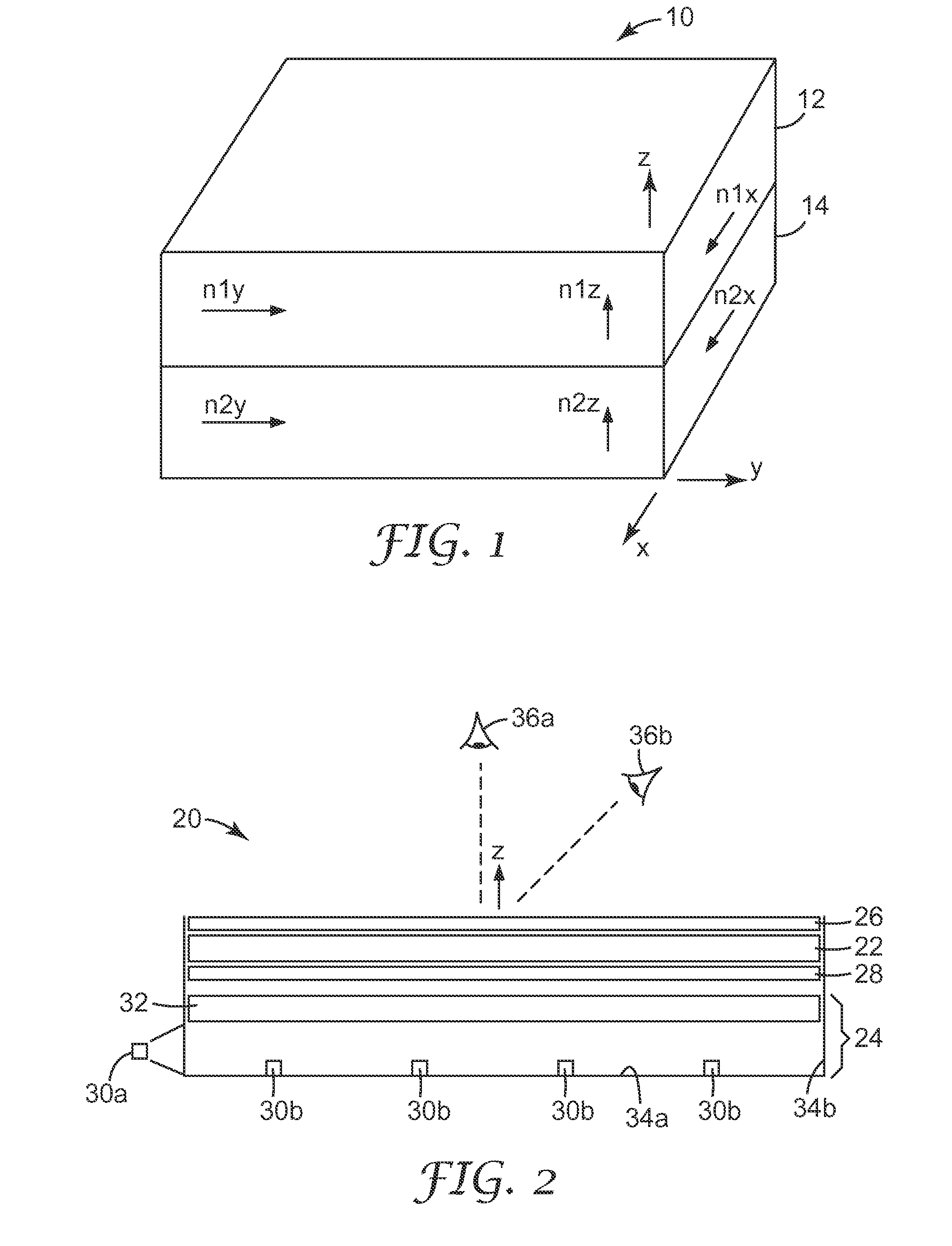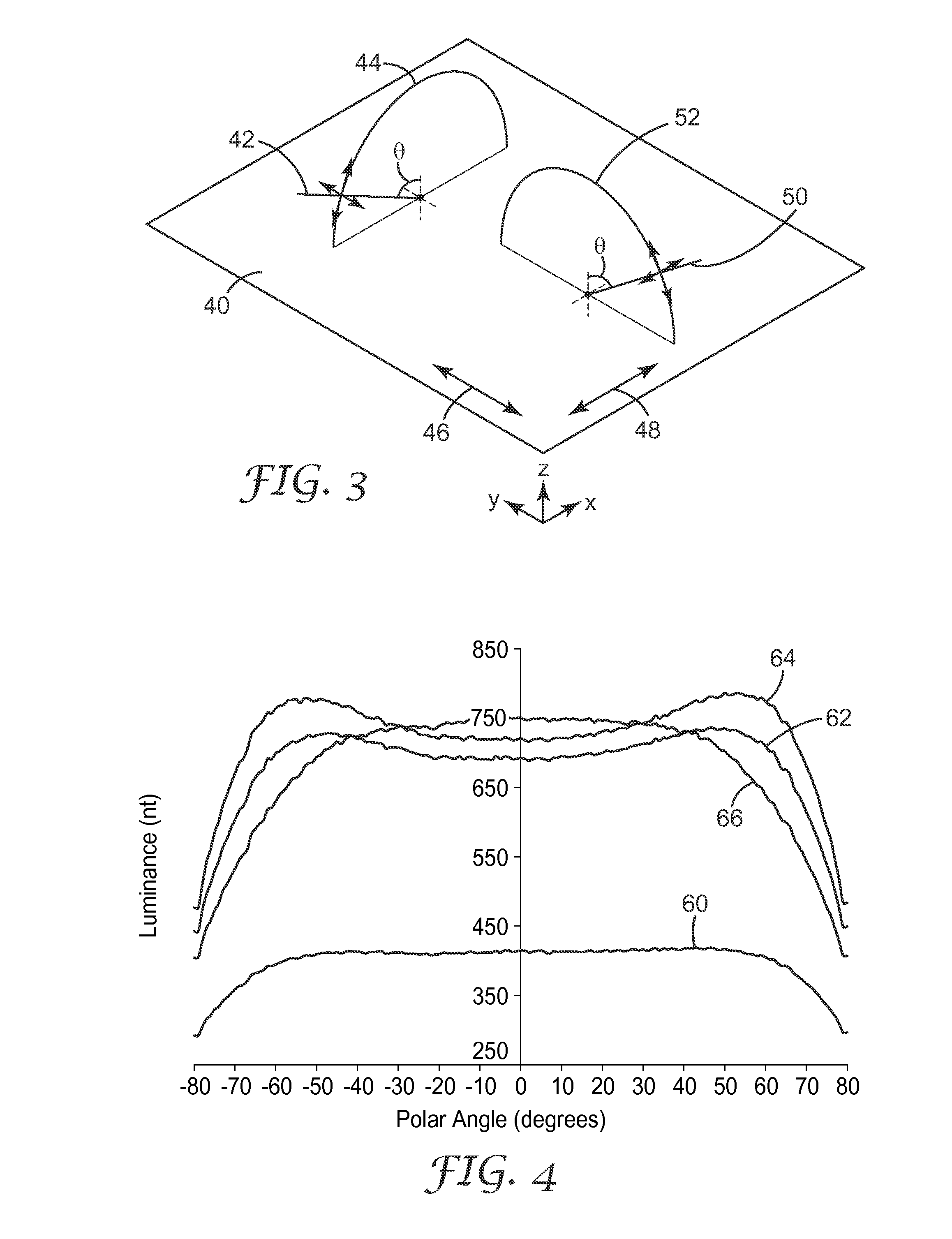Low layer count reflective polarizer with optimized gain
a reflective polarizer and low layer count technology, applied in the field of multi-layer optical films, can solve the problems of reducing the transmission of light of the desired polarization in the optical system, reducing the color over the visible spectrum control difficulty of microlayer stacks that have neither very small nor very large reflectivities, and exemplary gain and color performance, and substantially avoiding off-axis gain peaks
- Summary
- Abstract
- Description
- Claims
- Application Information
AI Technical Summary
Benefits of technology
Problems solved by technology
Method used
Image
Examples
Embodiment Construction
[0040]In order to more clearly describe the off-axis gain behavior observed in commercially available reflective polarizers, we provide in FIG. 3 a perspective view of an optical film 40 in relation to a global x-y-z Cartesian coordinate system. The film 40 may be a multilayer reflective polarizer, in which case the x-, y-, and z-axes can be identical to the local x-, y-, and z-axes discussed above. Alternatively, the film 40 may be another optical film or surface, e.g., the front surface of a display system. As shown, film 40 is laid flat, parallel to the x-y plane.
[0041]In reference to traditional polarizing films, light can be considered to be polarized in two orthogonal planes, where the electric vector of the light, which is transverse to the propagation direction of the light, lies within a particular plane of polarization. In turn, the polarization state of a given light ray can be resolved into two orthogonal polarization states: p-polarized and s-polarized light. P-polarize...
PUM
 Login to View More
Login to View More Abstract
Description
Claims
Application Information
 Login to View More
Login to View More - R&D
- Intellectual Property
- Life Sciences
- Materials
- Tech Scout
- Unparalleled Data Quality
- Higher Quality Content
- 60% Fewer Hallucinations
Browse by: Latest US Patents, China's latest patents, Technical Efficacy Thesaurus, Application Domain, Technology Topic, Popular Technical Reports.
© 2025 PatSnap. All rights reserved.Legal|Privacy policy|Modern Slavery Act Transparency Statement|Sitemap|About US| Contact US: help@patsnap.com



